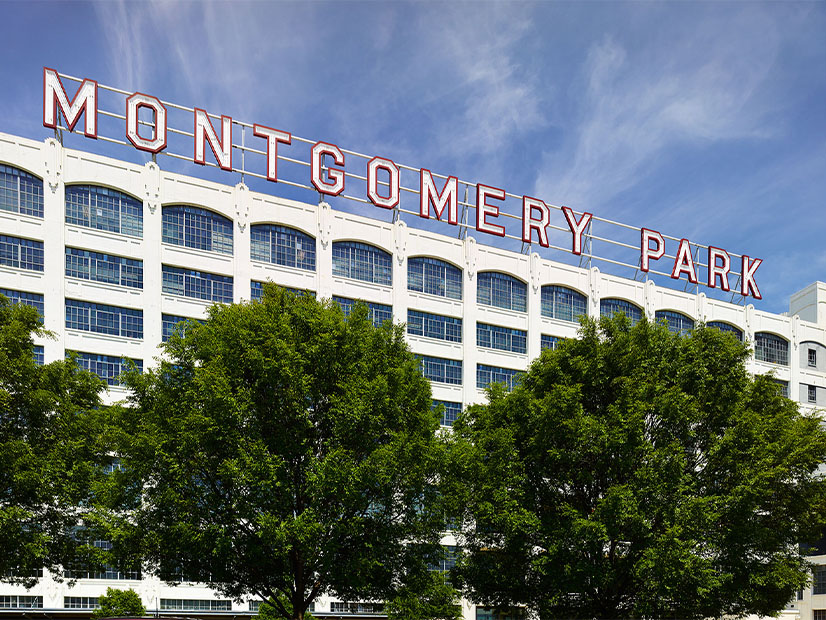
The Maryland Climate Change Commission’s Mitigation Working Group began a steep climb April 19 when it met for the first time following the enactment of the state’s Climate Solutions Now Act (SB 0528).
Maryland Gov. Larry Hogan (R) allowed the bill to become law April 8 without his signature, along with HB 0740, which requires Maryland’s State Retirement and Pension System to incorporate climate risk into its investment evaluations. (See Md. Climate Bills Become Law Without Hogan’s Signature.)
The Climate Solutions Now Act resets the state’s emissions-reduction goals to 60% below 2006 levels by 2031 and net zero by 2045. That’s half again as large as the goal set in the 2016 Maryland Greenhouse Gas Reduction Act (GGRA), which mandated a 40% reduction in emissions from 2006 levels by 2030.
The commission is charged with advising the Maryland Department of the Environment (MDE), the governor and the General Assembly on the dramatic greenhouse gas reductions the new law requires. The bill “requires MDE to publish a draft 2031 plan in approximately 14 months from now,” said Mark Stewart, climate change program manager at MDE. “That means that we will have to draft a plan that’s ready to circulate with state agencies and the governor’s office next spring, soon after a new administration is in place.”
The Mitigation Working Group Steering Committee will “map out a work plan” for creating the draft by September, Stewart said.
Closing the gap between the GGRA plan and the tougher 2031 target “within the next eight years will not be easy,” he said.
A Need for More Nuclear Power?
Commission member Sandy Hertz, director of the Office of Climate Change Resilience and Adaptation in the Maryland Department of Transportation, said that while she isn’t in favor of nuclear power, it could be hard to reach the 2031 target “if we don’t have something like that, that has a much larger output than what we have right now in terms of clean and renewable or low-carbon energy sources.”
“We don’t have hydroelectric,” she said. “We don’t have geothermal everywhere in Maryland. So I’m just wondering … how do [we] get 70% of the [power] to be that [low-carbon] source if it’s not necessarily available?”
Maryland’s only nuclear power plant, the Calvert Cliffs power station, accounted for 41% of the state’s net electricity generation in 2020, according to the Energy Information Administration. About 11% of the state’s electricity generation came from renewables in the same year, EIA says. About three-quarters of the renewable energy consumed in Maryland is imported, according to state officials.
Curbing Building Emissions
Getting buildings to net zero carbon emissions is another of the enormous challenges set by the Climate Solutions Now Act. During the amendment process, provisions that would have required emissions-reduction targets for large commercial buildings and multifamily dwellings were cut, from 50% to 20% in 2030, and a net-zero target for 2035 was eliminated. (See Md. General Assembly Sends Climate Solutions Bill to Hogan.)
Mel Litter, CEO of Elemental Impact Solutions, noted the law’s requirement that buildings 35,000 square feet and larger have zero direct emissions by 2040 would cover a planned 80,000-square-foot innovation incubator. She wanted to know if there is a list of architects who could design the building to meet those requirements. Stewart said there is not, but the U.S. Green Building Council has a directory of architects and other professionals with LEED (Leadership in Energy and Environmental Design) credentials. [Editor’s note: An earlier version of this article incorrectly described Litter as a member of the climate change commission.]
The new law also includes an assumption that federal funding will be available to help electric utilities transition to carbon-neutral energy production and pushes them to apply for such monies. But federal funding might not be available in the future, said Kim Coble of the Maryland League of Conservation Voters, commission co-chair. If federal money dries up, “this is going to get a lot more difficult to do,” she said.
New Working Groups Created
SB 0528 also requires MDE to provide staffing for four newly created Climate Change Commission working groups, which were tasked with providing reports to the commission and legislature by the end of 2023:
-
-
- The Just Transition Employment and Retraining Working Group is charged with providing a report on the number of jobs created to counter climate impacts; the projected inventory of jobs needed and skills and training required; workforce disruption due to community changes caused by the transition to a low-carbon economy; and strategies to target workforce development and job creation in communities historically impacted by carbon polluters.
- The Energy Industry Revitalization Working Group will conduct a study of the impacts of transitioning to renewable energy, including the number of small businesses impacted by the transition; the costs and economic impact of the transition; and an analysis on the impact of generating facilities that may close because of the transition.
- The Energy Resilience and Efficiency Working Group will report on methods to increase grid security and encourage electricity storage technology research; potential electric grid distribution transformation projects; the potential to develop clean energy resources on previously developed project sites; and the lifespan and viability of energy facilities in the state that do not emit GHGs.
- The Solar Photovoltaic Systems Recovery, Reuse and Recycling Working Group will focus on the recycling, disposal and decommissioning of solar PV systems and must recommend financing mechanisms to support a circular economy approach.
-

